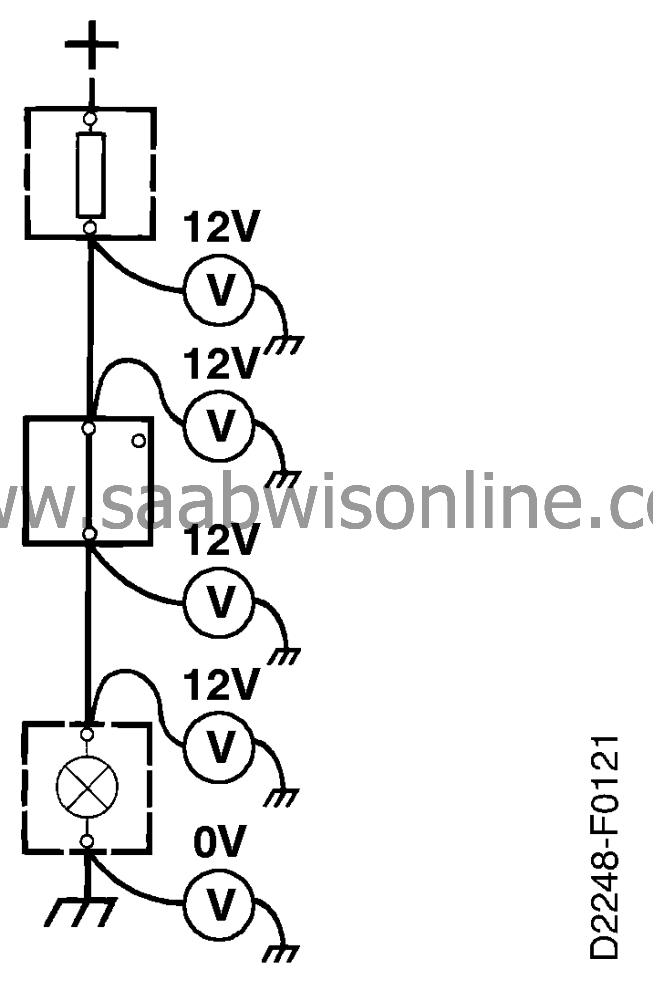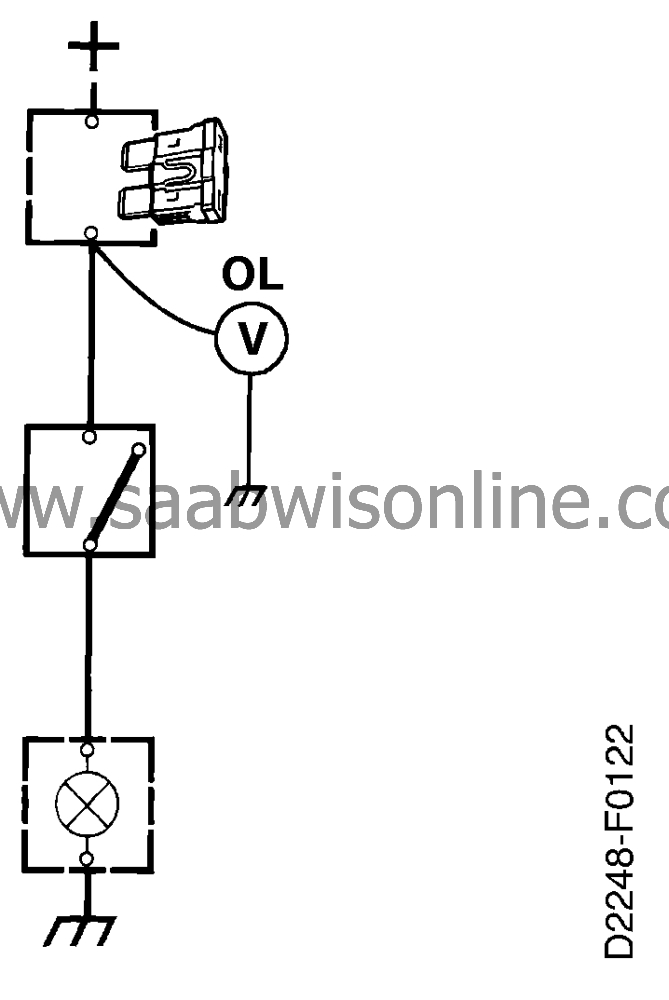Checking for opencircuits/short circuits
|
|
Checking for open
circuits/short circuits
|
|
Open circuits (Resistance measurement)
|
|
1.
|
Make sure that the component
or wire to be checked is not connected to the power supply.
|
|
2.
|
Set the instrument for resistance measuring and connect the measurement
cables, one at each end of the component or wire to be checked. The resistance for the wiring
must normally be less than 1 Ohm. The specified value applies to components.
|
|
Open circuits (voltage measurement)
|

|
1.
|
Connect the load (if any).
|
|
2.
|
Set the instrument for voltage measuring and connect the black measuring cable
to safe ground and the red measuring cable to the wiring.
|
|
3.
|
Start measuring at the output/switch and move away from the power source
towards the electronic control module/user. The voltage disappears when you pass the
open circuit.
|
|
4.
|
Start measuring at the input/user and move away from the power source
towards the electronic control module/consumer. The voltage disappears when you pass
the open circuit.
|
|
Short circuit to ground (Resistance measuring)
|

|
1.
|
Make sure that the cable to be
checked is not connected to a power source and that any load is disconnected.
|
|
2.
|
Set the instrument for resistance measuring and connect one measuring cable to
the load side of the wiring and the other measuring cable to safe ground.
|
|
3.
|
Carefully move the wiring and at the same time check that the instrument shows
infinite resistance OL (OL=Over Load) the whole time.
|





